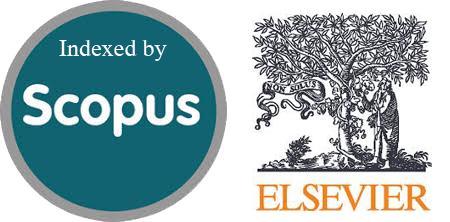Pregnancy Outcome in Pregnant Women with Idiopathic Polyhydramnios
DOI:
https://doi.org/10.54133/ajms.v8i2.2000Keywords:
Cesarean Section, Fetal Distress, Polyhydramnios, Postpartum hemorrhageAbstract
Background: Polyhydramnios is an excess of the amniotic fluid documented by quantitative ultrasonography. Over 40% of polyhydramnios are prenatally idiopathic and diagnosed with a particular abnormality postnatally; the majority of other cases remain unexplained. Objective: To compare the maternal and neonatal outcomes of pregnancies with idiopathic polyhydramnios to pregnancies without polyhydramnios. Methods: A retrospective case-control study involving 38 singleton pregnancies as cases and 65 as controls, outcomes concerning preterm delivery, mode of delivery, presence or absence of antepartum and postpartum hemorrhage, birth weight, weight for gestational age, Apgar score, fetal distress, neonatal intensive care unit (NICU) admission, stillbirth, and neonatal death were then compared. Results: Cases showed a significantly higher preterm delivery rate (52.6% vs. 9.2%), cesarean section prevalence (76.3% vs. 23.1%), and maternal postpartum hemorrhage (PPH) (21.1% vs. 6.2%) compared to controls. Neonates from cases had significantly lower 1-minute (6.3 vs. 7.9) and 5-minute Apgar scores (8.0 vs. 9.0), more significant birth weight variability (3100 vs. 3240g), and higher rates of newborns large for gestational age (LGA) (23.7 vs. 1.5%), fetal distress (36.8 vs. 3.1%), and neonatal intensive care unit (NICU) admission (50.0 vs. 3.1%). Newborns being small for gestational age (SGA) prevalence (13.2 vs. 3.1%), stillbirths (5.3 vs. 3.1%), and neonatal deaths (7.9% vs. 1.5%) showed no significant differences. Conclusions: Idiopathic polyhydramnios is associated with increased risks of preterm delivery, Cesarean section (CS) delivery, neonatal distress, and maternal hemorrhage, highlighting the need for vigilant prenatal care and availability of neonatal intensive care.
Downloads
References
Bauserman M, Nathan R, Lokangaka A, McClure EM, Moore J, Ishoso D, et al. Polyhydramnios among women in a cluster-randomized trial of ultrasound during prenatal care within five low and low-middle income countries: a secondary analysis of the first look study. BMC Pregnancy Childbirth. 2019;19:258. doi: 10.1186/s12884-019-2412-6. DOI: https://doi.org/10.1186/s12884-019-2412-6
Hill LM, Breckle R, Thomas ML, Fries JK. Polyhydramnios: ultrasonically detected prevalence and neonatal outcome. Obstet Gynecol. 1987;69:21-5. PMID: 3540761.
Walter A, Calite E, Berg C, Gembruch U, Müller A, Geipel A. Prenatal diagnosis of fetal growthrestriction with polyhydramnios, etiology and impact on postnatal outcome. Sci Rep. 2022;12: 415. doi: 10.1038/s41598-021-04371-9. DOI: https://doi.org/10.1038/s41598-021-04371-9
Kechagias KS, Triantafyllidis KK, Zouridaki G, Savvidou M. Obstetric and neonatal outcomes in pregnant women with idiopathic polyhydramnios: a systematic review and meta-analysis. Sci Rep. 2024;14:5296. doi: 10.1038/s41598-024-54840-0.
Rogers R, Moyer K, Moise KJ. Congenital myotonic dystrophy: An overlooked diagnosis not amenable to detection by sequencing. Prenat Diagn. 2022;42:233-35. doi: 10.1002/pd.6105. DOI: https://doi.org/10.1002/pd.6105
Weissbach T, Hausman-Kedem M, Yanay Z, Meyer R, Bar-Yosef O, Leibovitch L, et al. Congenital hypotonia: systematic approach for prenatal detection. Ultrasound Obstet Gynecol. 2023;62:94-105. doi: 10.1002/uog.26178. DOI: https://doi.org/10.1002/uog.26178
Abele H, Starz S, Hoopmann M, Yazdi B, Rall K, Kagan KO. Idiopathic polyhydramnios and postnatal abnormalities. Fetal Diagn Ther. 2012;32:251-255. 20120628. doi: 10.1159/000338659. DOI: https://doi.org/10.1159/000338659
Bicocca MJ, Qureshey EJ, Chauhan SP, Hernandez-Andrade E, Sibai BM, Nowlen C, et al. Semiquantitative assessment of amniotic fluid among individuals with and without diabetes mellitus. J Ultrasound Med. 2022;41:447-55. doi: 10.1002/jum.15725. DOI: https://doi.org/10.1002/jum.15725
Jabali SA, Amin K. Prediction of gestational diabetes mellitus in the first Trimester: comparison of maternal fetuin-A, N-terminal pro-atrial natriuretic peptide, high-sensitivity C-reactive protein, and fasting glucose levels. Kirkuk J Med Sci. 2025;13:46-53. doi: 10.32894/kjms.2025.151075.1108. DOI: https://doi.org/10.32894/kjms.2025.151075.1108
Dorleijn DM, Cohen-Overbeek TE, Groenendaal F, Bruinse HW, Stoutenbeek P. Idiopathic polyhydramnios and postnatal findings. J Matern Fetal Neonatal Med. 2009;22:315-320. doi: 10.1080/14767050802531870. DOI: https://doi.org/10.1080/14767050802531870
Ghalib A, Ahmed I, Othman N, Kadir M. Seroprevalence of Toxoplasma gondii among pregnant women in Kirkuk/ Iraq. Kirkuk Univ J Sci Studies. 2011;6:1-11. doi: 10.32894/kujss.2011.43107. DOI: https://doi.org/10.32894/kujss.2011.43107
Amin KM, Salman YJ, Ali OS, Jirjees SY. Correlation between Interleukin-6, Toxoplasmosis, and Cytomegalovirus in Novel COVID (nCoV-19) patients in Kirkuk–Iraq. Front Health Informat. 2024;13:6814-6825. doi: 10.52783/fhi.vi.590.
Mohammed EA, Haseeb MF. Maternal and neonatal outcomes of gestational thrombocytopenia in pregnant women from Kirkuk city, Iraq: A case-control study. Al-Rafidain J Med Sci. 2023;5: S142-146. doi: 10.54133/ajms.v5i1S.324. DOI: https://doi.org/10.54133/ajms.v5i1S.324
Kechagias KS, Triantafyllidis KK, Zouridaki G and Savvidou M. Obstetric and neonatal outcomes in pregnant women with idiopathic polyhydramnios: a systematic review and meta-analysis. Scientific Reports 2024; 14: 5296. DOI: 10.1038/s41598-024-54840-0. DOI: https://doi.org/10.1038/s41598-024-54840-0
Khan S, Donnelly J. Outcome of pregnancy in women diagnosed with idiopathic polyhydramnios. Aust N Z J Obstet Gynaecol. 2017;57:57-62. doi: 10.1111/ajo.12578. DOI: https://doi.org/10.1111/ajo.12578
Hebbar S, Rai L, Adiga P, Guruvare S. Reference ranges of amniotic fluid index in late third trimester of pregnancy: what should the optimal interval between two ultrasound examinations be? J Pregnancy. 2015;2015:319204. doi: 10.1155/2015/319204. DOI: https://doi.org/10.1155/2015/319204
Biggio JR, Wenstrom KD, Dubard MB, Cliver SP. Hydramnios prediction of adverse perinatal outcome. Obstet Gynecol. 1999;94:773-777. doi: 10.1016/s0029-7844(99)00370-1. DOI: https://doi.org/10.1016/S0029-7844(99)00370-1
Whittington JR, Chauhan SP, Wendel MP, Ghahremani TL, Pagan ME, Carter MM, et al. Historical assessment, practical management, and future recommendations for abnormal amniotic fluid volumes. J Clin Med. 2024;13. doi: 10.3390/jcm13164702. DOI: https://doi.org/10.3390/jcm13164702
Sgayer I, Haddad Y, Nakhleh Francis Y, Tuma R, Lowenstein L, Odeh M. Foetal cerebral blood redistribution in idiopathic polyhydramnios and the impact on perinatal outcomes. J Obstet Gynaecol. 2024;44:2408678. doi: 10.1080/01443615.2024.2408678. DOI: https://doi.org/10.1080/01443615.2024.2408678
Pagan M, Magann EF, Rabie N, Steelman SC, Hu Z, Ounpraseuth S. Idiopathic polyhydramnios and pregnancy outcome: systematic review and meta-analysis. Ultrasound Obstet Gynecol. 2023;61:302-309. doi: 10.1002/uog.24973. DOI: https://doi.org/10.1002/uog.24973
Zeino S, Carbillon L, Pharisien I, Tigaizin A, Benchimol M, Murtada R, et al. Delivery outcomes of term pregnancy complicated by idiopathic polyhydramnios. J Gynecol Obstet Hum Reprod. 2017;46:349-354. doi: 10.1016/j.jogoh.2017.02.014. DOI: https://doi.org/10.1016/j.jogoh.2017.02.014
Wax JR, Cartin A, Craig WY, Pinette MG. Transient idiopathic polyhydramnios: Maternal and perinatal outcomes: Maternal and perinatal outcomes. J Ultrasound Med. 2022;41:2859-2866. doi: 10.1002/jum.15974. DOI: https://doi.org/10.1002/jum.15974
Lerner Y, Peled T, Yehushua M, Rotem R, Weiss A, Sela HY, et al. Labor induction in women with isolated polyhydramnios at term: A multicenter retrospective cohort analysis. J Clin Med. 2024;13. doi: 10.3390/jcm13051416. DOI: https://doi.org/10.3390/jcm13051416
Dashe JS, Pressman EK, Hibbard JU. SMFM Consult Series #46: Evaluation and management of polyhydramnios. Am J Obstet Gynecol. 2018;219:B2-b8. doi: 10.1016/j.ajog.2018.07.016. DOI: https://doi.org/10.1016/j.ajog.2018.07.016
Wiegand SL, Beamon CJ, Chescheir NC, Stamilio D. Idiopathic polyhydramnios: Severity and perinatal morbidity. Am J Perinatol. 2016;33:658-664. doi: 10.1055/s-0036-1571320. DOI: https://doi.org/10.1055/s-0036-1571320

Downloads
Published
How to Cite
Issue
Section
License
Copyright (c) 2025 Al-Rafidain Journal of Medical Sciences ( ISSN 2789-3219 )

This work is licensed under a Creative Commons Attribution-NonCommercial-ShareAlike 4.0 International License.
Published by Al-Rafidain University College. This is an open access journal issued under the CC BY-NC-SA 4.0 license (https://creativecommons.org/licenses/by-nc-sa/4.0/).











